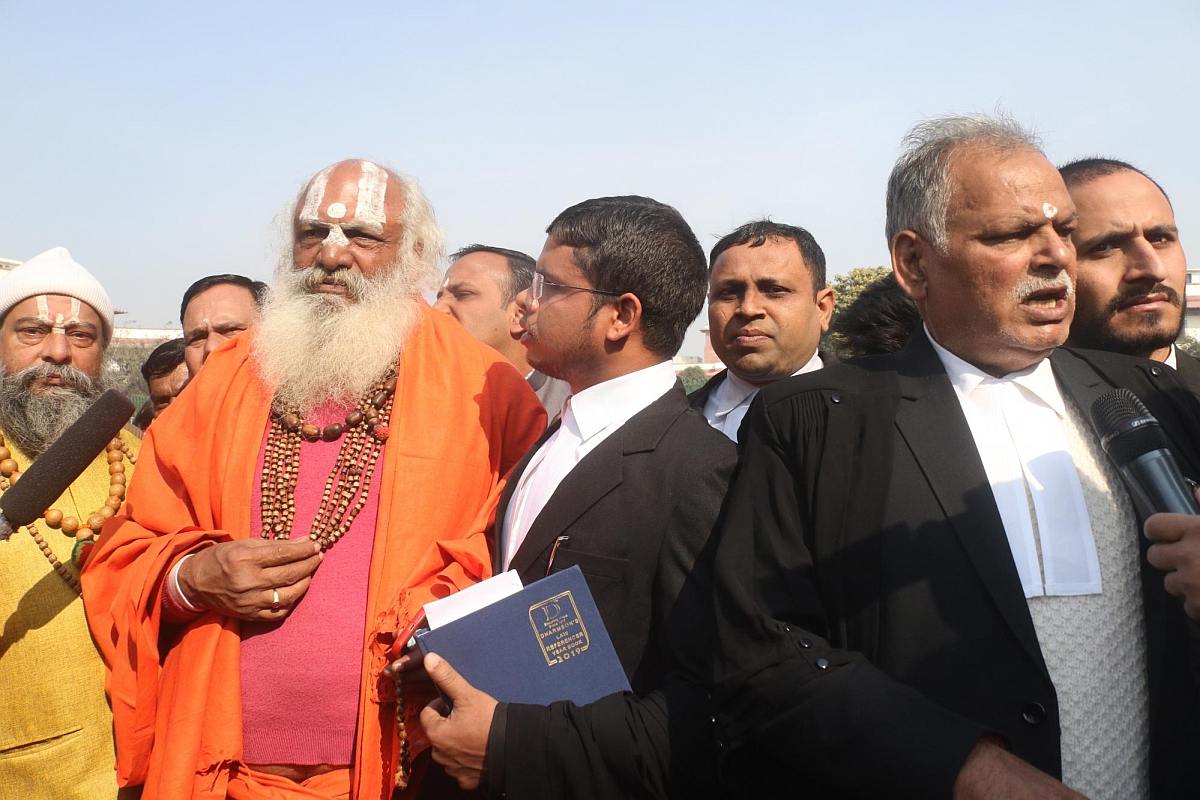SC protects from arrest former IAS trainee officer Puja Khedkar
Posting Puja Khedkar plea for hearing on February 14, the bench in its order said, “Till next date of hearing, no coercive steps to be taken against petitioner (Khedkar).”
The Nirmohi Akhara submitted before the Constitution Bench, headed by Chief Justice Ranjan Gogoi that its claim over the disputed land was filed in 1934.

New Delhi: Nirmohi Akhara Mahant Dharam Dass, one of the petitioner of Ram Janambhoomi -Babri Masjid suit along with other members and lawyers at Supreme Court. (Photo: File/ IANS)
The Nirmohi Akhara laid full claim to the core disputed 2.77 acre Ram Janmabhumi-Babri Masjid land as the Supreme Court commenced with the hearing of the controversial Ayodhya case.
Counsel appearing for Nirmohi Akhara, Sushil Jain, said the practice of worshipping Ram Lalla has been continuing at the site for hundreds of years since time “immemorial.” The counsel also read out the written submission filed by those who opposed the Akhara’s claims of mandatory injunctions.
Advertisement
The Constitution Bench headed by Chief Justice Ranjan Gogoi had sought to know the grounds on which the Akhara’s claims were opposed.
Advertisement
Arguing its claim on the disputed site in Ayodhya, Nirmohi Akhara informed the Supreme Court on Tuesday that Muslims stopped five-times prayer a day at Babri Masjid in 1934 and abandoned the “structure” in December 1949 even for Friday prayers. The Nirmohi Akhara submitted before the Constitution Bench headed by Chief Justice Ranjan Gogoi that its claim over the disputed land was filed in 1934. The counter claim suit was filed by the Sunni Waqf Board over disputed land in 1961.
The counsel for Akhara also claimed that idols of Lord Ram were placed inside the mosque on the night of December 22-23, 1949. The counsel argued that Hindu parties performed daily prayers and contested the claims of Muslim parties at the disputed site.
Counsel Jain argued on the point that a place cannot be considered a mosque if prayers are not offered. “We have staked our claims since 1934. No namaz has been offered there.”
The counsel also said the provision of wuzu, an area where Muslims wash hands and body parts before beginning prayers, was absent from at the place, added the counsel. “The prayers were never offered there since 1885, therefore we can arrive at a conclusion that it ceased to exist as a mosque many years ago.”
The Ram Janmabhoomi-Babri Masjid land dispute involves 2.77 acres of land in Ayodhya, where a 16th Century mosque allegedly built by Mughal emperor Babur stood. In December 1992, the mosque was demolished by Hindu activists who believed that it was built on the ruins of a temple that marked the birthplace of Lord Ram. The incident sparked riots across the country leading to death of almost 2,000 people.
Advertisement